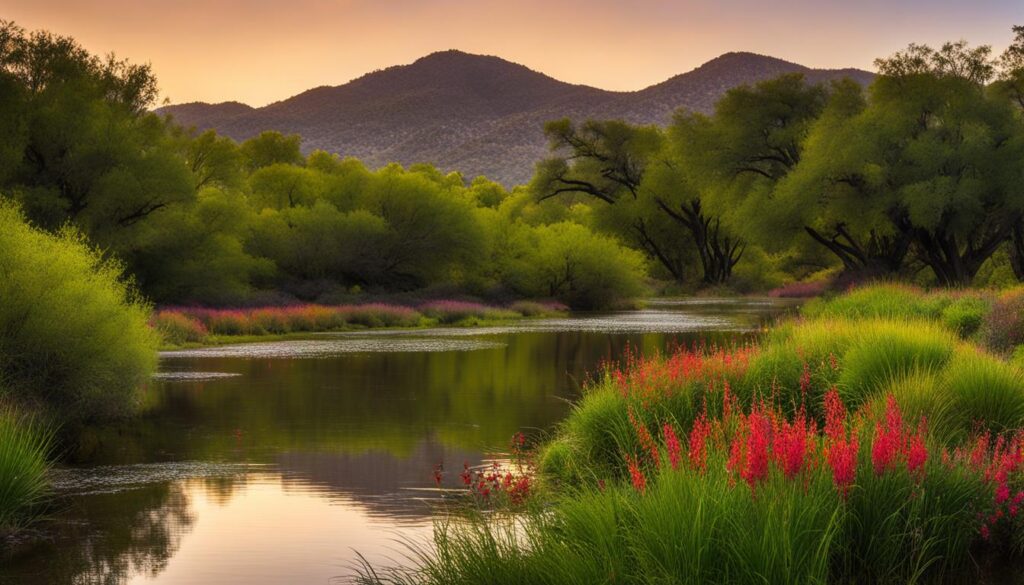Whether you’re a hiker, camper, wildlife observer, or simply a nature lover, here is some fascinating data that reflects our collective affinity for the great outdoors. From visitor counts to trail usage, each statistic offers a glimpse into the vibrant life of national parks and the adventures they host.
Here are some recent national parks visitor statistics:
- In 2022, the National Park Service received 312 million recreation visits, a 5% increase from 2021[3].
- In 2022, 75 national parks logged more than 1 million visits, 9 parks logged more than 5 million visits, and 3 parks logged more than 10 million visits[3].
- The top 10 most-visited national parks in 2022 were: Great Smoky Mountains National Park, Grand Canyon National Park, Yellowstone National Park, Yosemite National Park, Zion National Park, Rocky Mountain National Park, Acadia National Park, Olympic National Park, Grand Teton National Park, and Denali National Park[3].
- In 2022, the National Park Service reported 1,358,946,990 recreation visitor hours[4].
- In 2022, there were 8,039,768 overnight stays in the National Park System[4].
- In 2022, the market size of the national and state park sector in the United States was estimated at approximately $940 million[5].
- In 2022, the National Park Service received 15.7 billion total recreation visits since 1904[4].
- In 2022, 38% of recreation visits were to recreation-focused parks, 30% to nature-focused parks, and 32% to historical/cultural-focused parks[4].
- In 2022, the National Park Service reported 278,939,216 recreation visits[1].
These statistics provide a snapshot of the popularity and impact of national parks on tourism and the economy. They can help journalists create engaging and informative articles about the role of national parks in American society and the environment.
Sources:
[1] https://www.nps.gov/aboutus/visitation-numbers.htm
[2] https://www.nps.gov/subjects/socialscience/visitor-use-statistics.htm
[3] https://www.ksby.com/most-and-least-popular-national-parks
[4] https://www.nps.gov/subjects/socialscience/annual-visitation-highlights.htm
[5] https://www.statista.com/topics/2393/national-park-tourism-in-the-us/
Exploring Beyond the Beauty: Understanding Crime Statistics in National Parks
This section delves into the less discussed yet crucial aspect of our adventures: the safety and security within these vast natural landscapes. While national parks are overwhelmingly safe and serene places, understanding crime statistics is key to fostering a well-informed and vigilant community of outdoor enthusiasts.
The data presented here aims not to deter but to empower. Unfortunately the parks service doesn’t release as much data as we like but here is the most recent.
By shedding light on the types and frequencies of incidents, we equip ourselves with the knowledge necessary to navigate these majestic terrains with confidence and care.
- In 1980, 16 homicides, 69 rapes, 294 robberies, 643 assaults, 1,552 burglaries, 6,230 larcenies, and 250 vehicle thefts were reported in national parks[1].
- In 2019, there were an average of six deaths per week in the National Park System, or approximately 312 deaths per year[2].
- From 2010 to 2019, more than a thousand people died from misadventures at U.S. National Parks[4].
- Falls are the biggest killer of park visitors, responsible for 245 deaths over the ten years studied[4].
- Medical or natural death was the second biggest cause of death, responsible for 192 deaths over the same period[4].
- Homicide was the third biggest cause of death, responsible for 160 deaths over the same period[4].
- The National Park Service has two law enforcement arms: the park police and enforcement rangers[1].
- Park police (1,100 officers) enforce the law in the urban parks of the Washington, D.C., area and two other urban national parks in New York and San Francisco[1].
- Enforcement rangers stationed in national parks are rangers who specialize in law enforcement[1].
- Yosemite National Park is one of the most crime-plagued areas operated by the Park Service, with one of every nine Part 1 crimes reported in the Park Service system in 1980 occurring in Yosemite[1].
- Many in the Park Service fear that the trend in Yosemite may spread to other parks[1].
- The vast expanse of national parks makes them prime spots for covering up a crime[2].
- In 2021, more than 1,000 people were reported missing in national parks[2].
- The grisly murders of two women in Shenandoah National Park in 1996 remain unsolved[2].
These statistics provide a glimpse into the crime rates and safety concerns in national parks, highlighting the importance of visitor safety and law enforcement efforts.
Sources:
[1] https://www.ojp.gov/ncjrs/virtual-library/abstracts/keeping-peace-parks
[2] https://freerangeamerican.us/national-park-murders-hundreds-killed-missing-no-one-is-talking/
[3] https://www.nps.gov/orgs/1563/news.htm
[4] https://www.forbes.com/sites/michaelgoldstein/2021/02/02/americas-most-dangerous-national-parks/
[5] https://www.nps.gov/aboutus/visitation-numbers.htm
Parks Animal Attacks Statistics
The wilderness of our national parks offers the rare privilege of witnessing wildlife in its natural state, from majestic elk to awe-inspiring bears. However, with this privilege comes the responsibility to understand and respect the boundaries of these wild inhabitants.
These incidents are rare and often preventable, with knowledge and preparedness being our best tools.
Here are some statistics on animal attacks at national parks:
- According to Yellowstone’s data, only 44 people have been injured inside the park out of 118 million visits since 1979[1].
- Venturing into the backcountry increases your risk of grizzly attack, with 1 in 232,613 backcountry hikers attacked as opposed to 1 in 59.5 million visitors in the front[1].
- Since 1872, when Yellowstone National Park was established, only eight people have been killed by grizzlies inside the park[1].
- More people were killed by wild animal attacks (6) than homicide (5) in national parks from 2010 to 2019[5].
- Falls are by far the biggest killer of park visitors, responsible for 245 deaths over the ten-year period studied[5].
- Wildlife encounters are a relatively rare cause of death in national parks[1].
- The most dangerous animals in national parks include bears, bison, moose, mountain lions, snakes, sharks, alligators, bees, and ticks[1].
It is important to note that national parks are generally safe, and the vast majority of visitors have positive experiences. However, visitors should always be aware of the risks associated with wildlife encounters and take appropriate precautions to stay safe.
Citations:
[1] https://www.outsideonline.com/adventure-travel/national-parks/most-dangerous-animals-in-national-parks/
[2] https://www.abc27.com/national/these-are-americas-deadliest-national-parks-data/
[3] https://freerangeamerican.us/national-park-murders-hundreds-killed-missing-no-one-is-talking/
[4] https://www.nationalparkstraveler.org/2008/03/violent-deaths-national-parks
[5] https://www.forbes.com/sites/michaelgoldstein/2021/02/02/americas-most-dangerous-national-parks/
Also be sure to check out our articles on American Parks Statistics and Camping Statistics






